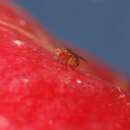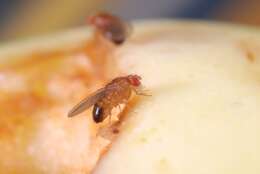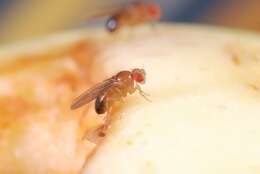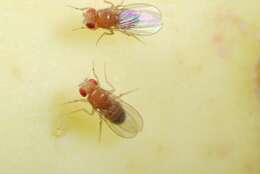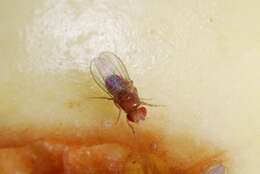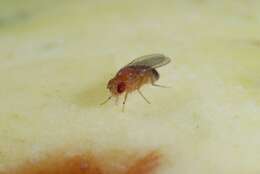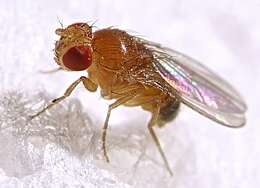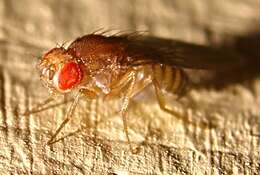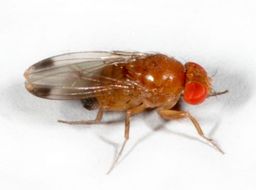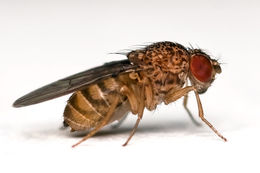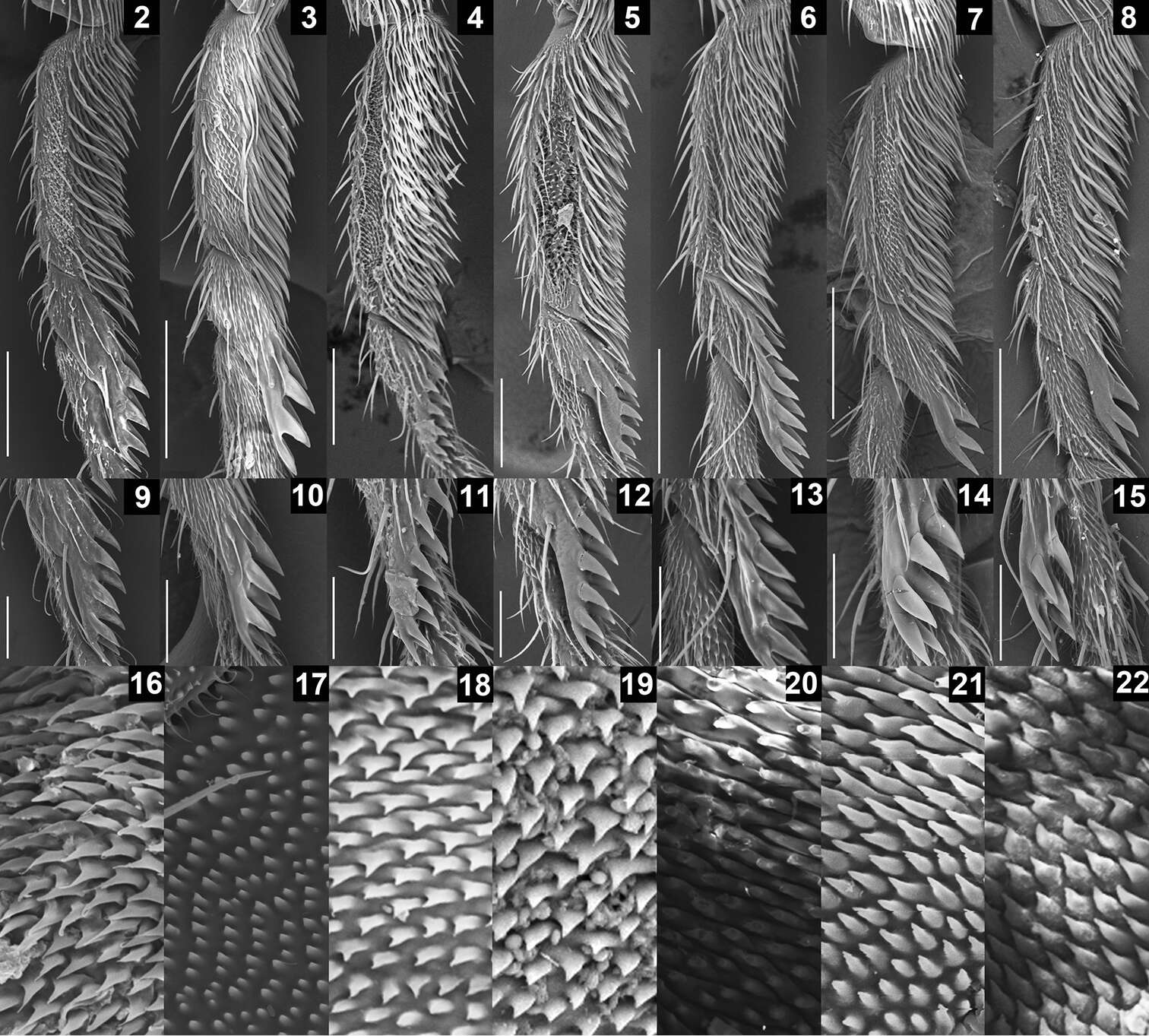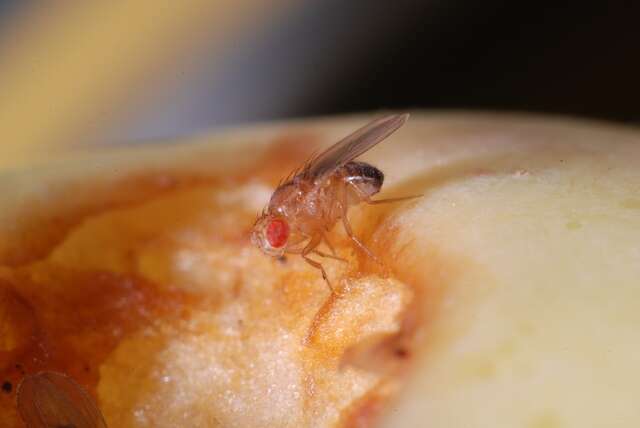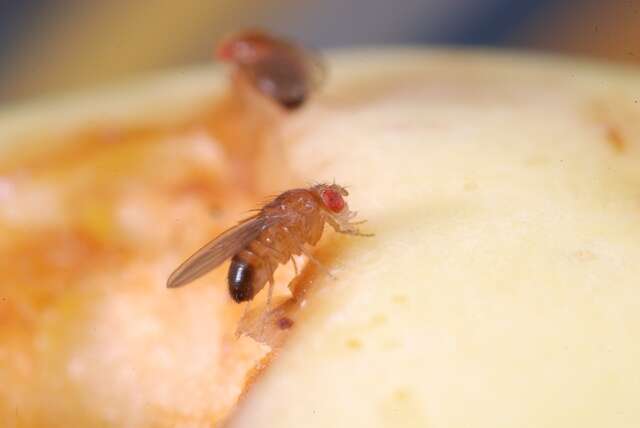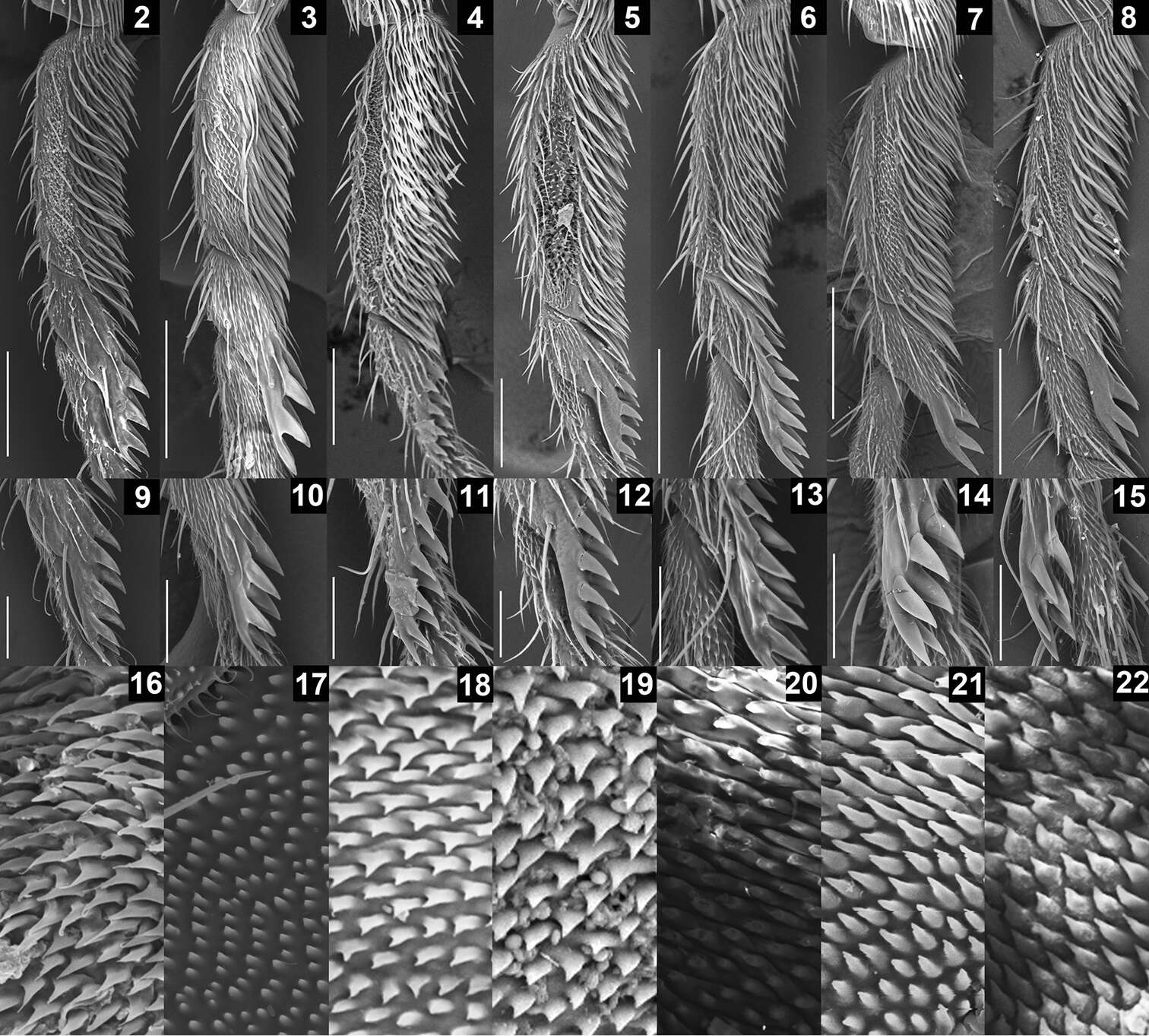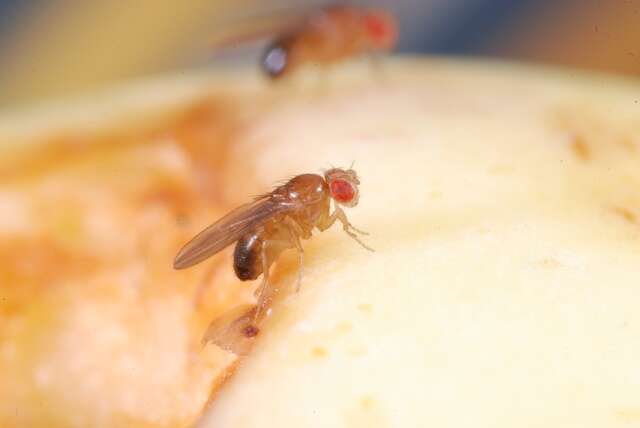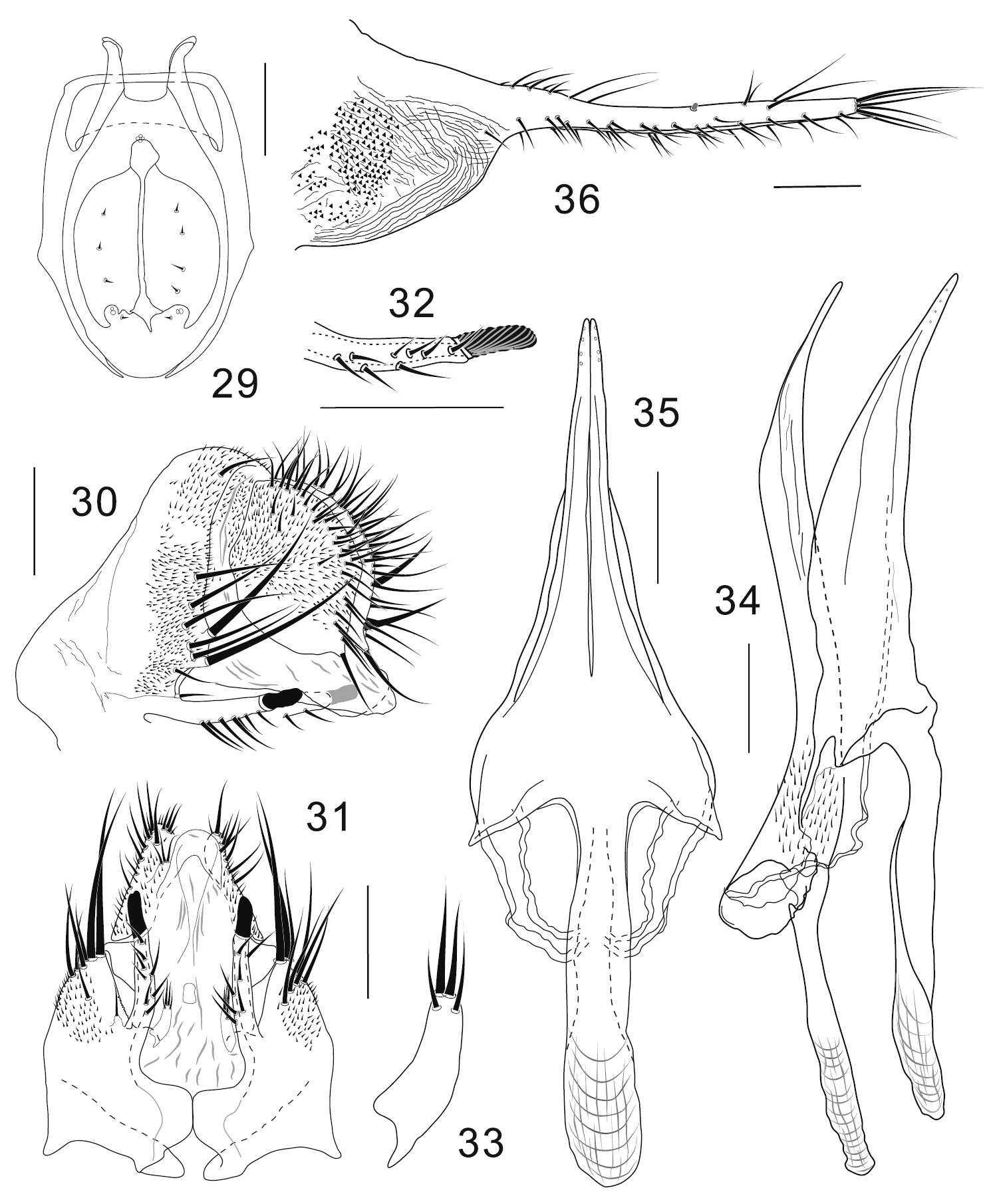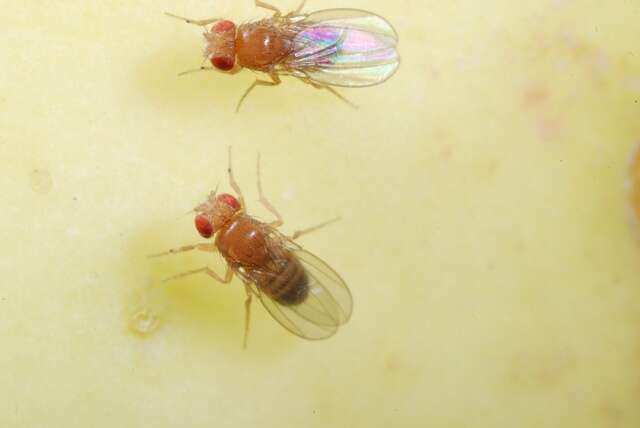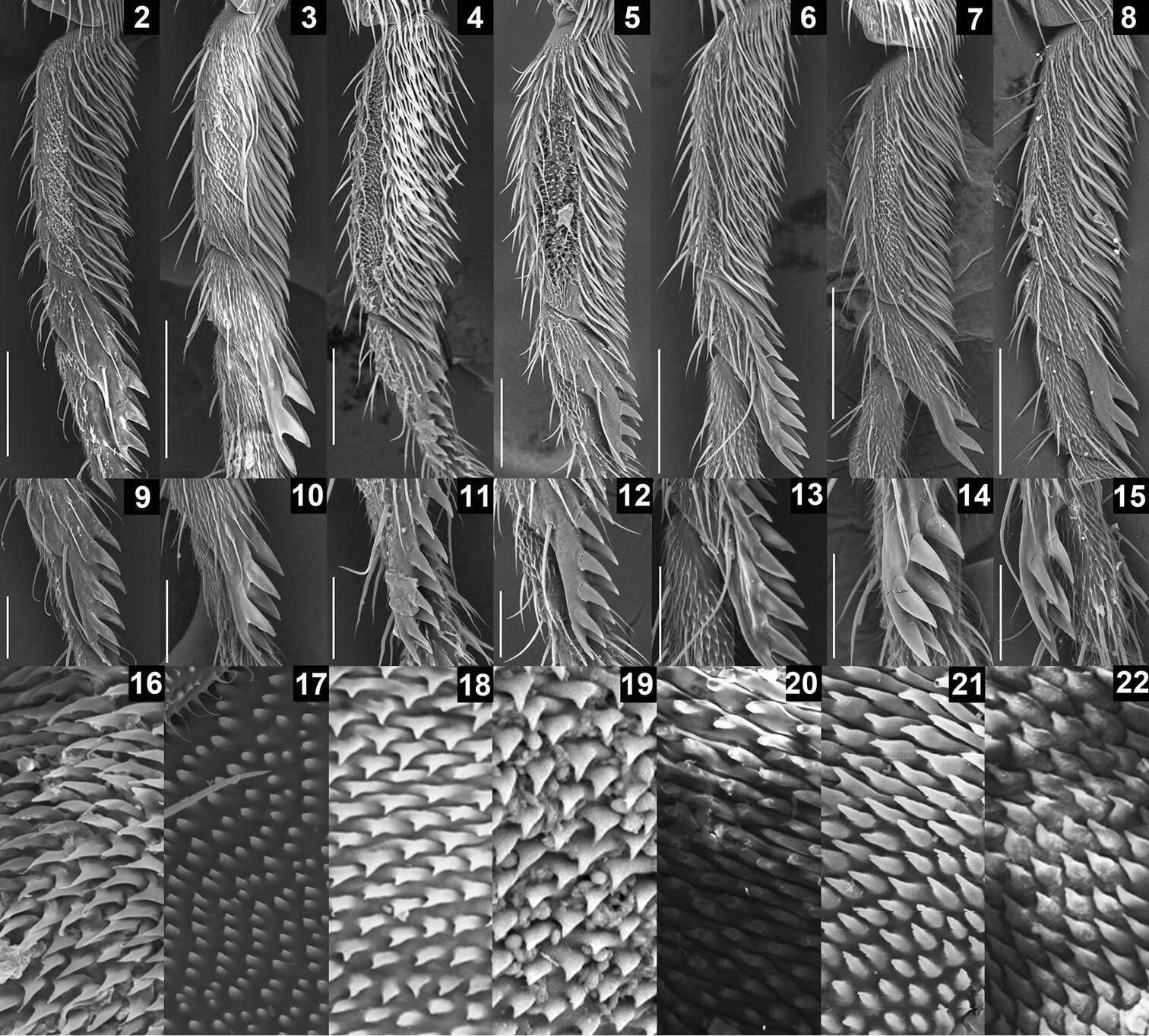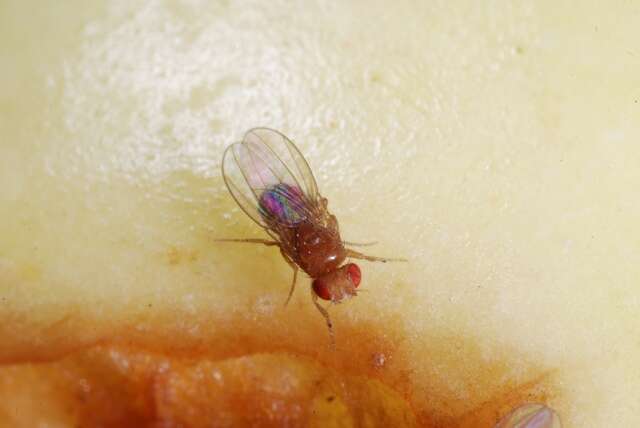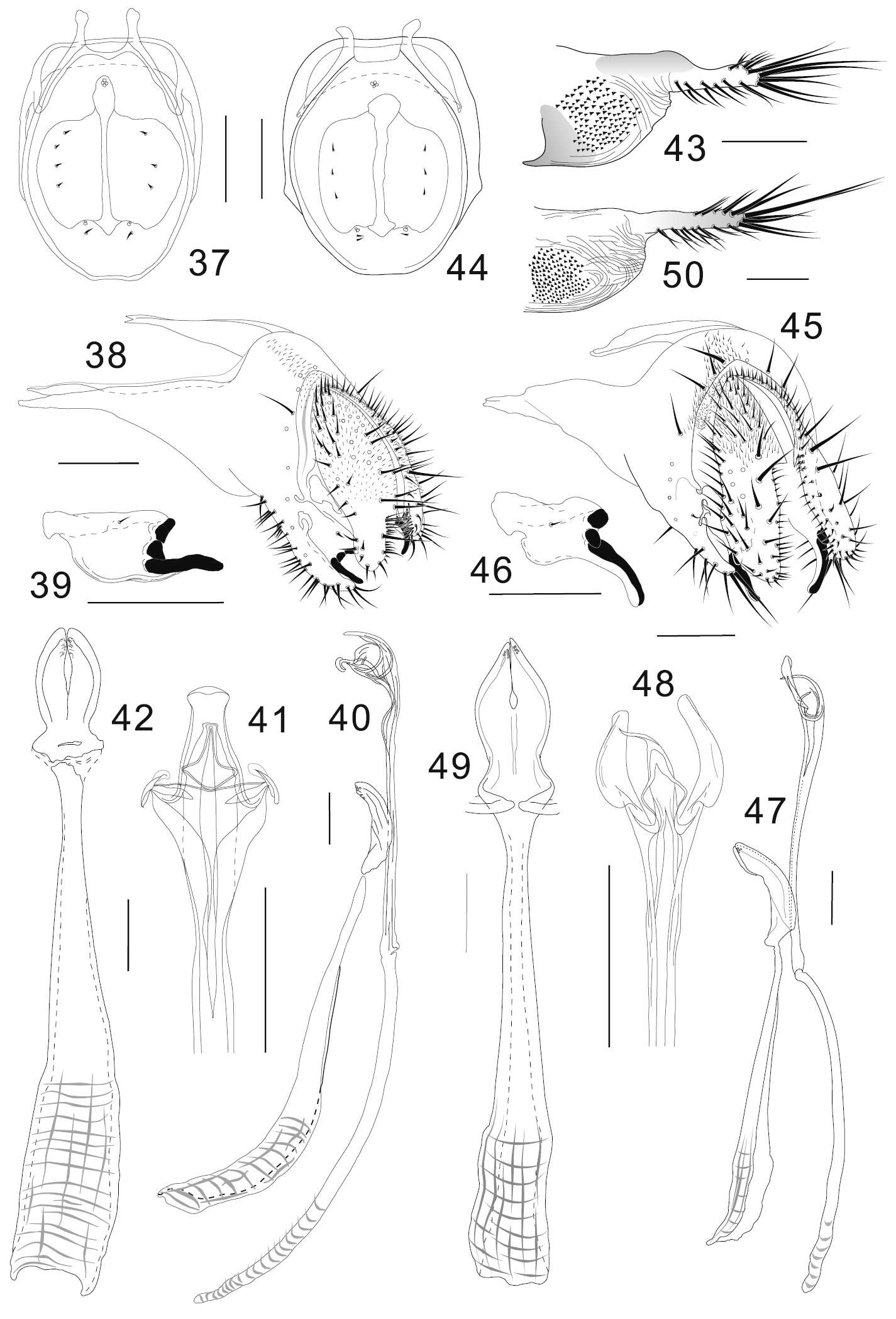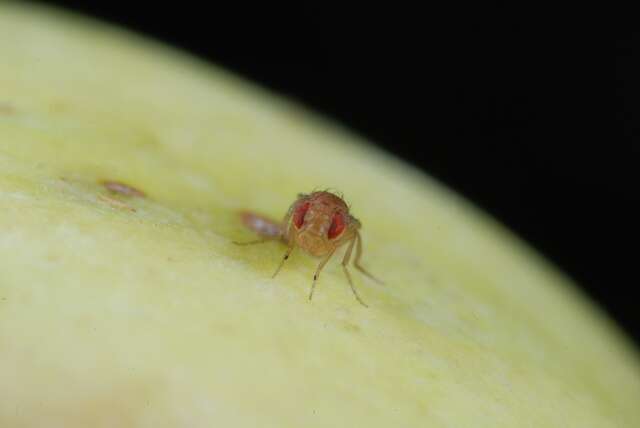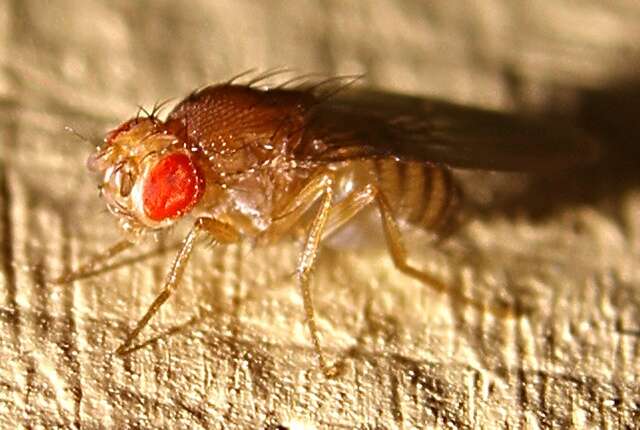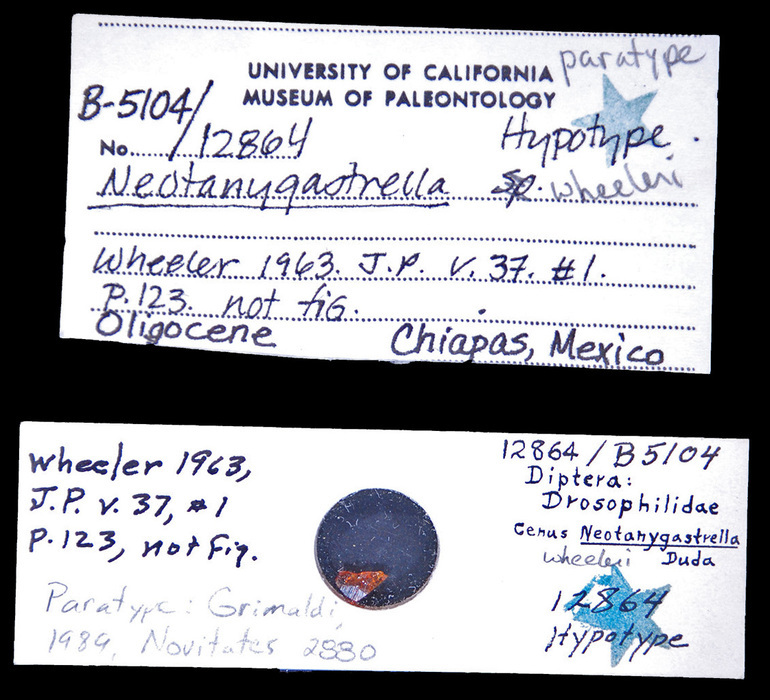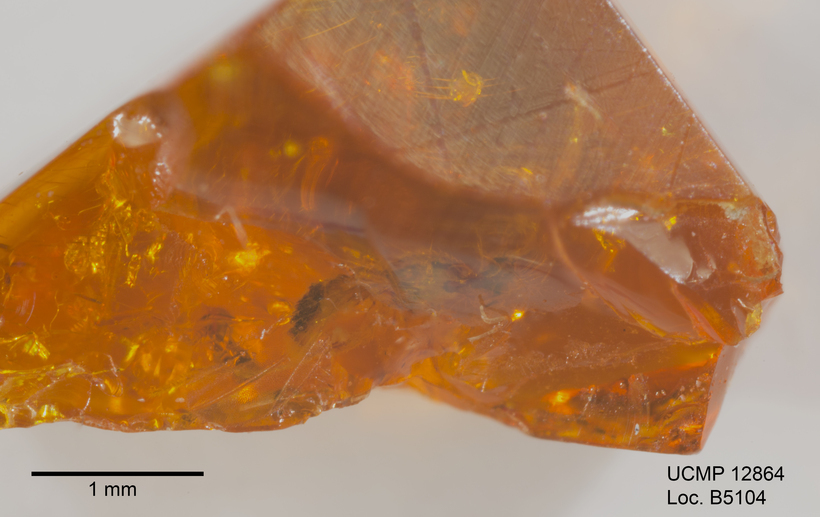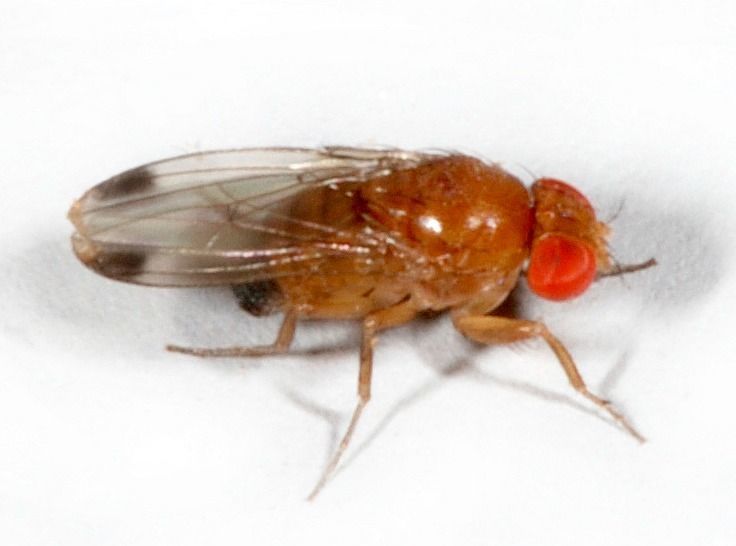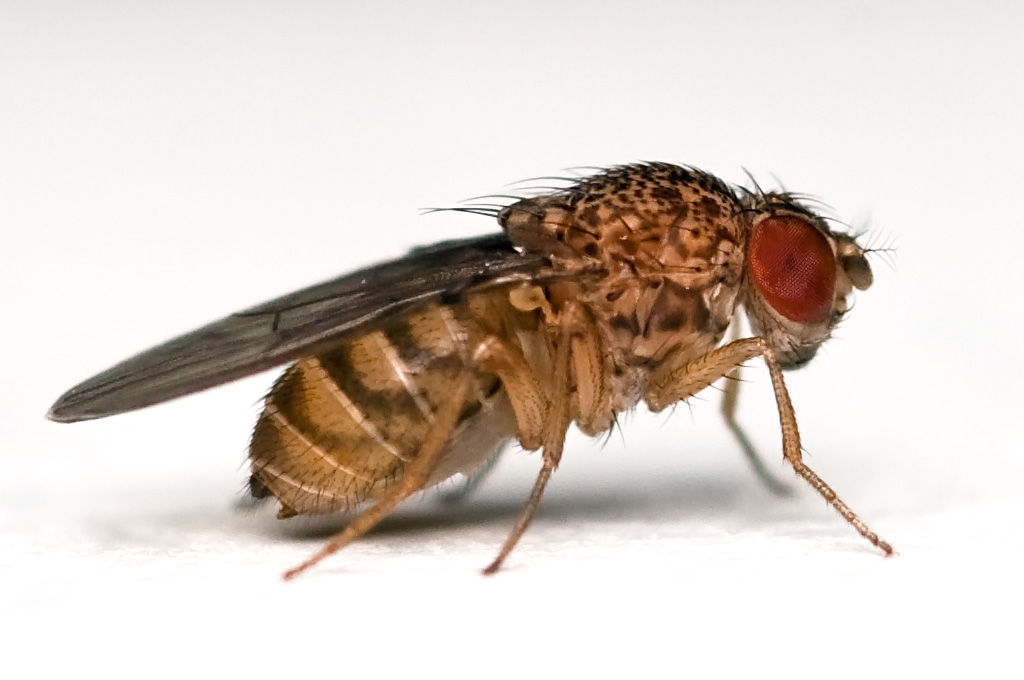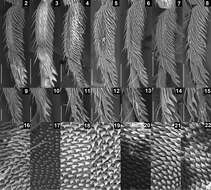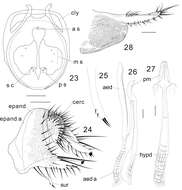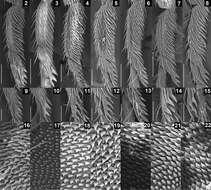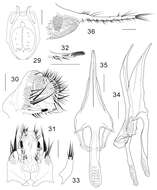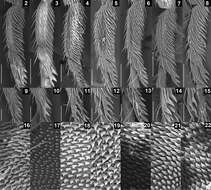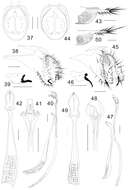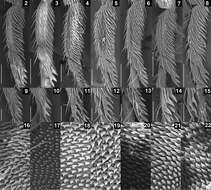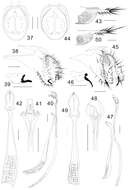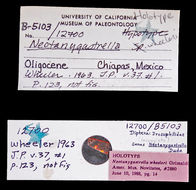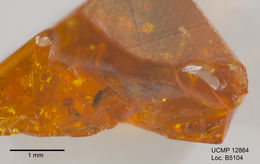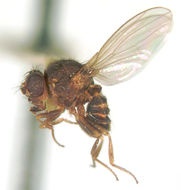-
Have Randers
-
Nan-Nan Li, Masanori J. Toda, Zhao Fu, Ji-Min Chen, Su-Hua Li, Jian-Jun Gao
Zookeys
Figures 2–22.SEM photographs showing leg and oviscapt fine structures in the Colocasiomyia gigantea species group. Foreleg tarsomeres I and II (2–8), pegs on foreleg tarsomere II (9–15) and warts on basal part of lateral lobe or basal membrane of oviscapt (16–22) of Colocasiomyia gigantea (2, 9, 16), Colocasiomyia scindapsae (3, 10, 17), Colocasiomyia rhaphidophorae (4, 11, 18), Colocasiomyia longifilamentata sp. n. (5, 12, 19), Colocasiomyia longivalva sp. n. (6, 13, 20), Colocasiomyia hailini sp. n. (7, 14, 21) and Colocasiomyia yini sp. n. (8, 15, 22). Scale line = 0.1 mm in 2–8, 0.05 mm in 9–15. Figures 16–22 are in the same magnification, with the width corresponding to 30 µm.
-
Have Randers
-
Nan-Nan Li, Masanori J. Toda, Zhao Fu, Ji-Min Chen, Su-Hua Li, Jian-Jun Gao
Zookeys
Figures 23–28.Colocasiomyia longifilamentata Li & Gao, sp. n. Adult male and female (paratypes) from Baihualing, Yunnan, China: 23 Cibarium and clypeus (dorsal view) 24 periphallic organs (posterolateral view) 25 apical part of surstylus 26 phallic organs (lateral view) 27 hypandrium and parameres (ventral view) 28 oviscapt (lateral view). Abbreviations: aed = aedeagus, aed a = aedeagal apodeme, a s = anterior sensilla, cerc = cercus, cly = clypeus, epand = epandrium, epand a = epandrial apodeme, hypd = hypandrium, m s = medial sensilla, ps = posterior sensilla, pm = paramere, s c = sensilla campaniformia, sur = surstylus. Scale lines = 0.1 mm.
-
Have Randers
-
Nan-Nan Li, Masanori J. Toda, Zhao Fu, Ji-Min Chen, Su-Hua Li, Jian-Jun Gao
Zookeys
Figures 2–22.SEM photographs showing leg and oviscapt fine structures in the Colocasiomyia gigantea species group. Foreleg tarsomeres I and II (2–8), pegs on foreleg tarsomere II (9–15) and warts on basal part of lateral lobe or basal membrane of oviscapt (16–22) of Colocasiomyia gigantea (2, 9, 16), Colocasiomyia scindapsae (3, 10, 17), Colocasiomyia rhaphidophorae (4, 11, 18), Colocasiomyia longifilamentata sp. n. (5, 12, 19), Colocasiomyia longivalva sp. n. (6, 13, 20), Colocasiomyia hailini sp. n. (7, 14, 21) and Colocasiomyia yini sp. n. (8, 15, 22). Scale line = 0.1 mm in 2–8, 0.05 mm in 9–15. Figures 16–22 are in the same magnification, with the width corresponding to 30 µm.
-
Have Randers
-
Nan-Nan Li, Masanori J. Toda, Zhao Fu, Ji-Min Chen, Su-Hua Li, Jian-Jun Gao
Zookeys
Figures 29–36.Colocasiomyia longivalva Li & Gao, sp. n. Adult male and female (paratypes) from Baihualing, Yunnan, China: 29 Cibarium and clypeus (dorsal view) 30 periphallic organs (posterolateral view) 31 periphallic organs (ventral view) 32 apical part of epandrial ventral lobe (ventral view) 33 surstylus (ventral view) 34 phallic organs (lateral view) 35 hypandrium and parameres (ventral view) 36 oviscapt (lateral view). Scale lines = 0.1 mm.
-
Have Randers
-
Nan-Nan Li, Masanori J. Toda, Zhao Fu, Ji-Min Chen, Su-Hua Li, Jian-Jun Gao
Zookeys
Figures 2–22.SEM photographs showing leg and oviscapt fine structures in the Colocasiomyia gigantea species group. Foreleg tarsomeres I and II (2–8), pegs on foreleg tarsomere II (9–15) and warts on basal part of lateral lobe or basal membrane of oviscapt (16–22) of Colocasiomyia gigantea (2, 9, 16), Colocasiomyia scindapsae (3, 10, 17), Colocasiomyia rhaphidophorae (4, 11, 18), Colocasiomyia longifilamentata sp. n. (5, 12, 19), Colocasiomyia longivalva sp. n. (6, 13, 20), Colocasiomyia hailini sp. n. (7, 14, 21) and Colocasiomyia yini sp. n. (8, 15, 22). Scale line = 0.1 mm in 2–8, 0.05 mm in 9–15. Figures 16–22 are in the same magnification, with the width corresponding to 30 µm.
-
Have Randers
-
Nan-Nan Li, Masanori J. Toda, Zhao Fu, Ji-Min Chen, Su-Hua Li, Jian-Jun Gao
Zookeys
Figures 37–50.Colocasiomyia hailini Li & Gao, sp. n. (37–43) and Colocasiomyia yini Li & Gao, sp. n. (44–50). Adult males and females (paratypes) from Baihualing, Yunnan, China: 37, 44 Cibarium and clypeus (dorsal view) 38, 45 periphallic organs (posterolateral view) 39, 46 surstylus 40, 47 phallic organs (lateral view) 41, 48 apical part of aedeagus (ventral view) 42, 49 hypandrium and parameres (ventral view) 43, 50 oviscapt (lateral view). Scale lines = 0.1 mm.
-
Have Randers
-
Nan-Nan Li, Masanori J. Toda, Zhao Fu, Ji-Min Chen, Su-Hua Li, Jian-Jun Gao
Zookeys
Figures 2–22.SEM photographs showing leg and oviscapt fine structures in the Colocasiomyia gigantea species group. Foreleg tarsomeres I and II (2–8), pegs on foreleg tarsomere II (9–15) and warts on basal part of lateral lobe or basal membrane of oviscapt (16–22) of Colocasiomyia gigantea (2, 9, 16), Colocasiomyia scindapsae (3, 10, 17), Colocasiomyia rhaphidophorae (4, 11, 18), Colocasiomyia longifilamentata sp. n. (5, 12, 19), Colocasiomyia longivalva sp. n. (6, 13, 20), Colocasiomyia hailini sp. n. (7, 14, 21) and Colocasiomyia yini sp. n. (8, 15, 22). Scale line = 0.1 mm in 2–8, 0.05 mm in 9–15. Figures 16–22 are in the same magnification, with the width corresponding to 30 µm.
-
Have Randers
-
Nan-Nan Li, Masanori J. Toda, Zhao Fu, Ji-Min Chen, Su-Hua Li, Jian-Jun Gao
Zookeys
Figures 37–50.Colocasiomyia hailini Li & Gao, sp. n. (37–43) and Colocasiomyia yini Li & Gao, sp. n. (44–50). Adult males and females (paratypes) from Baihualing, Yunnan, China: 37, 44 Cibarium and clypeus (dorsal view) 38, 45 periphallic organs (posterolateral view) 39, 46 surstylus 40, 47 phallic organs (lateral view) 41, 48 apical part of aedeagus (ventral view) 42, 49 hypandrium and parameres (ventral view) 43, 50 oviscapt (lateral view). Scale lines = 0.1 mm.
-
Sully, Burgundy, France
-
Sully, Burgundy, France
-
2016 University of California Museum of Paleontology
CalPhotos
-
2016 University of California Museum of Paleontology
CalPhotos
-
2016 University of California Museum of Paleontology
CalPhotos
Image taken with a StackShot rail, Helicon Remote software, and rendered with Helicon Focus software.
-
undet. Drosophilidae, Costa Rica: Finca La Lola
-
-

